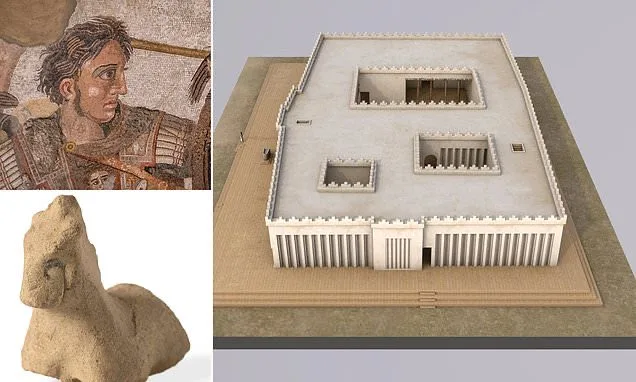Archaeologists in Iraq have made a remarkable discovery, unearthing twin temples, one built atop the other. The newer Hellenistic temple, dating back to the fourth century B.C., may have a connection to Alexander the Great.
The excavation, part of The Girsu Project by the British Museum, uncovered remnants of the older Sumerian temple in the exact same spot. The newer construction was dedicated to the Greek god Hercules and his Sumerian counterpart, the hero-god Ningirsu.
A significant find was a fired brick with an inscription in Aramaic and Greek, referring to "the giver of two brothers," potentially linking to Alexander the Great. The inscription hints at Zeus, the Greek sky god, who was symbolized by a lightning bolt and an eagle—both found on a coin struck in Babylon under Alexander's authority. The coin depicts Hercules resembling Alexander on one side and Zeus on the other, emphasizing the fraternal bond between Alexander and Heracles.
Sebastien Rey, the archaeologist leading the excavation, explained that while there's no confirmation of Alexander visiting the site, the presence of Babylonian silver under his control suggests the region's wealth financed the coin minting. Among the artifacts were discovered clay figurines of soldiers, possibly offered after a battle. The findings raise intriguing possibilities, suggesting Alexander may have played a direct role in the temple's re-establishment, possibly creating a memorial after his early death.

"It shows that the inhabitants of Babylonia in the [fourth] century B.C. had a vast knowledge of their history," Rey said. "The legacy of the Sumerians was still very vibrant."
While exploring the dual temple site, archaeologists discovered a silver drachm (an ancient Greek coin) buried beneath an altar or shrine and a brick with the two brothers' inscription.
"The inscription is very interesting because it mentions an enigmatic Babylonian name written in Greek and Aramaic," Rey said. "The name 'Adadnadinakhe,' which means 'Adad, the giver of brothers,' was clearly chosen as a ceremonial title because of its archaic tone and symbolic connotations. All the evidence indicates that the name was extraordinarily rare."
However, researchers don't know whether the Macedonian king visited the site.
"But he might have had the opportunity to go there, either during his stay in Babylon or by taking a detour on the way to [the city of] Susa," he said. "Significantly, he could pay his soldiers after taking Babylon because the city's coffers were surrendered to him. This meant that Alexander and his generals had control of the region's wealth, and they presumably used Babylonian silver to mint the many coins that were struck in the city."
In addition to the artifacts, researchers also found offerings normally given after a battle, including clay figurines of soldiers.
"The recovered figurines, which originated in a range of places in the Hellenistic world, must in many instances have been carried to the temple by visitors," he said. "Among these are the Macedonian horseback riders, who are strongly associated with Alexander. However, they could also be associated with a cult of warlike heroism.
"Combined with the clear signs of an Alexandrian presence in the shrine, this raises the intriguing possibility that Alexander was directly and actively instrumental in [the temple's] re-establishment, and (or) that it came to include a memorial to the departed Macedonian after his early death," Rey concluded.

